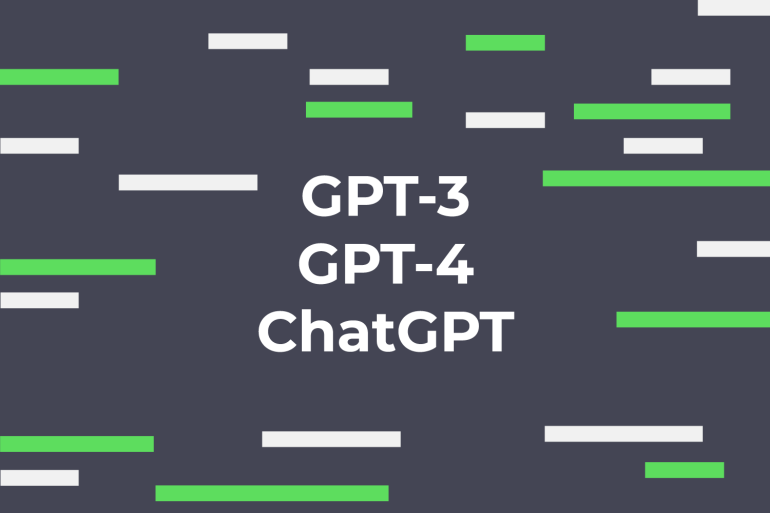How Does GPT4 Work and How Can You Start Using It in ChatGPT?
ARTIFICIAL INTELLIGENCE-AI, 27 Mar 2023
Mohammed Haddad | Al Jazeera - TRANSCEND Media Service
Launched on 14 Mar, GPT-4 is the successor to GPT-3 and is the technology behind the viral chatbot ChatGPT.
15 Mar 2023 – OpenAI, the company behind the viral chatbot ChatGPT, has announced the release of GPT-4.
In a blog post, the San Francisco artificial intelligence lab co-founded by Elon Musk and Sam Altman in 2015 said that its latest version is “multimodal”, meaning that the platform can accept image and text inputs and emit text outputs.
Sam Altman, OpenAI’s chief executive, said on Twitter that GPT-4 was the “most capable and aligned” model yet, though “it is still flawed”.
He added that it is “more creative than previous models, it hallucinates significantly less, and it is less biased”.
here is GPT-4, our most capable and aligned model yet. it is available today in our API (with a waitlist) and in ChatGPT+.https://t.co/2ZFC36xqAJ
it is still flawed, still limited, and it still seems more impressive on first use than it does after you spend more time with it.
— Sam Altman (@sama) March 14, 2023
What is ChatGPT and what are the differences between GPT-3 and GPT-4?
GPT stands for generative pre-trained transformer which is a type of large language model (LLM) neural network that can perform various natural language processing tasks such as answering questions, summarising text and even generating lines of code.
Large language models use a technique called deep learning to produce text that looks like it is produced by a human.
ChatGPT is an AI chatbot application that uses GPT-3 and GPT-4’s language models that people can interact with. If ChatGPT was a car then GPT-3 or GPT-4 would be the engine that powers it.
GPT-3 was initially released in 2020 and was trained on an impressive 175 billion parameters making it the largest neural network produced. GPT-3 has since been fine-tuned with the release of the GPT-3.5 series in 2022.
GPT-4 is the successor to GPT-3. Launched on March 14, OpenAI says this latest version can process up to 25,000 words – about eight times as many as GPT-3 – process images and handle much more nuanced instructions than GPT-3.5.
How can you access GPT-4?
For those new to ChatGPT, the best way to get started is by visiting chat.openai.com. Sign up for a free account which will give you access to GPT-3.
In order to use GPT-4, users have to subscribe to ChatGPT Plus, a $20 monthly subscription, for premium access to the service. At the time of writing, GPT-4 has a cap of 100 messages every four hours.
What new things can you do with GPT-4?
OpenAI says “GPT-4 excels at tasks that require advanced reasoning, complex instruction understanding and more creativity”.
In just a few hours since its launch, users have reported several creative uses of GPT-4, including:
Describe images and generate recipes
GPT-4’s multimodal feature allows users to upload images such as a photo of flour, butter, eggs and milk and GPT-4 will recommend some tasty treats that can be made with those ingredients. This feature, however, does not yet appear to be available to GPT-4 subscribers from the public.
Now let's get into the details.
GPT-4 is multimodal and it now accepts the images as inputs and generates captions, classifications, and analyses. 🔥
Below is one such example of giving an input image of ingredients and asking GPT-4 to generate a list of recipes. pic.twitter.com/mJMq8zLgkk
— Sumanth 🚀 (@Sumanth_077) March 15, 2023
Code video games
Twitter users have also been demonstrating how GPT-4 can code entire video games in their browsers in just a few minutes. Below is an example of how a user recreated the popular game Snake with no knowledge of JavaScript, the popular website-building programming language.
Can GPT-4 code an entire game for you? Yes, yes it can.
Here's how I recreated a Snake game that runs in your browser using Chat GPT-4 and @Replit, with ZERO knowledge of Javascript all in less than 20 mins 🧵 pic.twitter.com/jzQzSRIkfz
— Ammaar Reshi (@ammaar) March 14, 2023
Create websites
TO CONTINUE READING Go to Original – aljazeera.com
Tags: Artificial Intelligence AI, ChatGPT, Chatbot, Science, Technology
DISCLAIMER: The statements, views and opinions expressed in pieces republished here are solely those of the authors and do not necessarily represent those of TMS. In accordance with title 17 U.S.C. section 107, this material is distributed without profit to those who have expressed a prior interest in receiving the included information for research and educational purposes. TMS has no affiliation whatsoever with the originator of this article nor is TMS endorsed or sponsored by the originator. “GO TO ORIGINAL” links are provided as a convenience to our readers and allow for verification of authenticity. However, as originating pages are often updated by their originating host sites, the versions posted may not match the versions our readers view when clicking the “GO TO ORIGINAL” links. This site contains copyrighted material the use of which has not always been specifically authorized by the copyright owner. We are making such material available in our efforts to advance understanding of environmental, political, human rights, economic, democracy, scientific, and social justice issues, etc. We believe this constitutes a ‘fair use’ of any such copyrighted material as provided for in section 107 of the US Copyright Law. In accordance with Title 17 U.S.C. Section 107, the material on this site is distributed without profit to those who have expressed a prior interest in receiving the included information for research and educational purposes. For more information go to: http://www.law.cornell.edu/uscode/17/107.shtml. If you wish to use copyrighted material from this site for purposes of your own that go beyond ‘fair use’, you must obtain permission from the copyright owner.
Read more
Click here to go to the current weekly digest or pick another article:
ARTIFICIAL INTELLIGENCE-AI:
